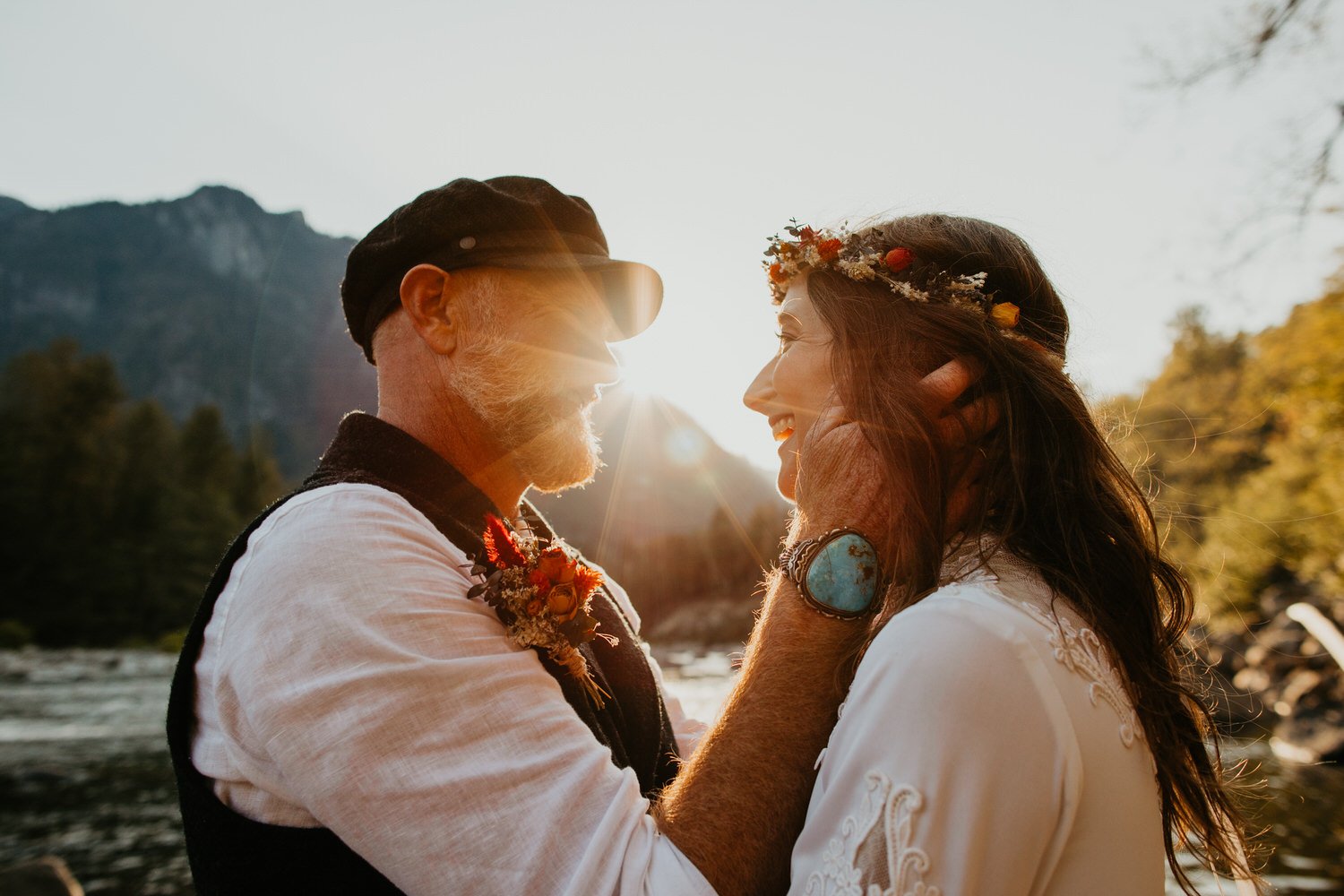The Complete Leave No Trace Guide for Your Elopement (updated for 2025!)
Picture this: you’re just beginning to plan your wedding and you want to host a beautiful but environmentally-conscious elopement. Getting those iconic photos with a dramatic landscape or with alpine flowers might seem super easy, but there is planning behind each and every one of those images! Lucky for you, I know a thing or two about protecting the area where you choose to elope and making conscious and intentional decisions to cause as little impact as possible at the same time.
What is Leave No Trace?
Leave No Trace (or LNT) is a set of outdoor ethics promoting conservation in the outdoors. It consists of seven principles, and in elopement photography, I strive to follow all seven! These guidelines help us to respect and protect the land we are using so that future generations can experience it as we do and so that the plants and wildlife are protected.
When it comes to planning a photography session, whether that be an elopement ceremony or portraits of just you, thinking about the LNT guidelines ahead of time will help us minimize our impact AND have a kick-ass session. Keep reading to learn what the seven principles are and how they apply to your elopement!
Why should I follow Leave No Trace at my elopement?
Simply put, if you enjoy the outdoors and want future generations (including us in 50 years!) to experience it in all its beauty the way we do, you should care about Leave No Trace.
If you’re not familiar with LNT yet, that’s TOTALLY okay. I’m here to educate and share my tips and resources so you feel prepared when planning your elopement. This blog is specifically tailored to eloping couples who aren’t sure how to ethically and responsibly elope while protecting Mother Earth - we’re all in this together (cue High School Musical)!
I promise this isn’t a way to shame you, make you uncomfortable for not knowing, or a way to make myself seem like some environmentalist. We all started with no knowledge of LNT, including me! I’ve made my fair share of mistakes in the past, have learned from them, and now am ready to share my insight with anyone and everyone.
I’m always learning ways to reduce my footprint when I go outside AND when I’m at home, so don’t think that I know everything! Continuing to further my knowledge about the outdoors is kiiiiiiiiinda my thing.
I am an official Leave No Trace Aware Photographer - I’ve taken the time to understand and dive deeper into Leave No Trace in my business, but I’ve also spent a lot of time outdoors learning how to effectively apply LNT principles to just about any situation.
How do I follow Leave No Trace at my elopement?
I’m known for making shit easy for my couples, so I’m about to break this down so it’s super easy to digest! I’m going to go over what each of the seven principles is and how it specifically applies to eloping. Let’s get into it!
#1. Plan ahead and prepare
To me, this means researching the different permits needed for your session (if any) and what restrictions are in place for the land we’ll be using. Most national parks, for example, require visitors to stay on the trail and not create new paths to protect the land.
Things to consider:
Will I need a permit to elope at my dream destination? Most national parks, state parks, and other public lands require a permit to not only have your ceremony but to bring along a photographer. This varies greatly from park to park, so consult your photographer or contact the park to get more information!
When is the busy season at this location? If you’ve spent any time in any national park during the summer, you may have felt the impact of overcrowding and peak season. Parking is challenging to find, paths and trails feel more narrow, and the environment takes on its biggest hit when visitors don’t follow LNT guidelines.
Can I bring my dog? You’ll want to look into the specific area where you’d like to elope, but many places do allow dogs! There are likely restrictions where they can and can’t go, so research what is possible.
Do I need any special gear to visit? This depends greatly on the time of year, but you might need to pack special gear like crampons, extra water, or a specific type of tent? These choices can impact the park just as much as anything else.
Will I have cell phone reception? It’s crucial to plan ahead where you're meeting everyone, including having a backup plan if nobody has service and you can’t find each other.
#2. Travel and camp on durable surfaces
Staying on the trail is key! I will not ever ask you to go off-trail and I will stay on the trail to take all of your photos. This means we won’t be walking through fragile alpine wildflowers at Mount Rainier, even though it might seem like a killer photo op.
Trails are always the least impactful way to get from point A to point B. It might be tempting to cut corners when switchbacking up a mountain, but many environments are fragile, and walking through them repeatedly can affect them for decades!
Have a plan B for your ceremony because trails close for a multitude of reasons like being washed out or unsafe to hike, so you could plan for a specific spot and not even be able to reach it!
If you are in an area that permits off-trail walking be sure to walk in a single file line. This minimizes your impact on the area!
Fun fact: Mount Rainier has their own Meadow Preservation Pledge to help minimize the impacts of visitors. Take a read through to learn about why staying on trail is so crucial!
#3. Dispose of waste properly
Anything we bring with us needs to be taken to a trash can either in the park or at home! While you might want to throw confetti right after you kiss your new partner, that confetti will stick around for decades and can end up in animals’ stomachs.
Plan to pack everything out, including waste! It might not seem very glamorous to talk about human waste on your elopement day, but hey, we all do it and you’re likely going to need to relieve yourself at some point. Some parks allow for digging a hole and burying waste, but you’ll still need to pack out the toilet paper. Research your specific location ahead of time and pack hygiene products to suit.
Alternatives to confetti: bubbles, sparklers (where allowed!), each guest hands you a flower, or get super creative! Beware- there is such a thing as ‘biodegradable confetti’ but it may not degrade for years or even decades, which really defeats the purpose of Leave No Trace. There is no regulation on what companies can consider biodegradable, so it’s better to not leave anything behind.
#4. Leave what you find
This one is pretty self-explanatory, but you’d be surprised what people think they can take from the outdoors!
Even taking one rock or flower has its impacts, especially when your 20 guests are all taking one, plus the millions of guests that visit some high-traffic parks each year. I’ll get photos of everything, and if there’s something you really want to remember (like the way the flowers looked in the light) make sure to tell me to get a photo!
This includes carving your initials into a tree! Would you want someone else’s initials in your elopement day photos? Nah, so let’s not leave ours behind either.
#5. Minimize campfire impacts
Some all-day elopements end at a campsite or require overnight camping to get to the ceremony location, which means campfires are likely!
Research if there are any fire or burn bans in the area ahead of time. You’d be surprised what you can and can’t burn in the summer months. Washington and the PNW in general is incredibly dry in the Spring, Summer, and Fall months, and typically has a full burn ban on all types of fires for a good portion of the year.
Talk to your photog about other romantic options like stargazing photos, bringing battery-powered lights or lanterns to illuminate you, or even standing in front of some car headlights! You’ll eliminate the risk of a wildfire and still get kickass nighttime photos.
#6. Respect wildlife
If your session is in an area that has bears, mountain lions, or any other large animals, you better believe I’m bringing bear spray and a knife to protect us. That being said, my goal is to always leave wildlife undisturbed!
Carry proper safety gear including bear spray if we’re in bear country or noisemakers that can scare off larger animals while we’re alone in the woods.
Pro tip: There are almost no Grizzly bears in Washington whatsoever, so if we come across a bear, it’ll likely be a black bear! These bears are known for being skittish and keeping to themselves. Usually they’re just trying to find food and want nothing to do with humans. The best way to spend time in bear country is to make noise - even talking with your hiking pals is enough to turn away black bears. They truly don’t want to be disturbed, so once they hear something unfamiliar, they’re likely to run off.
Never, ever approach wildlife for your own safety, but also for the safety of the animals! The more animals become domesticated, the further they will explore campgrounds and developed areas, causing injuries and even deaths. Incidents like this cause wildlife to be put down to protect visitors, which can be avoided by just giving them space.
Along with this, never, EVER leave behind food (even scraps, peels, shells, etc.!), as it will further the domestication of animals over time. The animals are not used to our processed food and the more they find food easily, the less they will rely on hunting/gathering on their own to survive. It’s a vicious cycle.
Store your food properly! Nothing like Yogi bear showing up ready to destroy everything until they get to the food they smell. Avoid it altogether by storing food in bear-proof canisters at least 200 feet away from your campsite. If we’re out on a day hike, it’s totally safe to carry smelly foods with you, as long as you pack out all of your trash. This rule is directed at people who are staying overnight in the backcountry or staying in one spot for more than a few hours.
#7. Be considerate of other visitors
Having your session take place in a popular location has pros, like it’s likely a very picturesque backdrop or it’s easily accessible, but also comes with some cons, like the fact that other visitors (or even other photographers and couples!) may also want to be in the exact spot you are taking photos. It can be a bit of a dance, but spending our time wisely without taking away from others’ experiences is key.
This might be your one and only elopement, but this could also be the only day a visitor is in the park as well! It’s a special experience for just about everyone, which means we should share the area.
Plan with your photographer where some secluded spots are so you truly CAN be alone and away from most visitors. You’ll thank yourselves when you realize every trail is constantly traversed!
Follow hiking etiquette which includes staying to the right of a path, letting uphill hikers pass in narrow spots and stepping off trail for a moment for them (uphill always has the right of way unless communicated between hikers otherwise), and travel single file when other hikers are present. It’s all about coexisting with each other so we all can enjoy our time outdoors!
There you have it! Now you should feel prepared to head into the outdoors with Leave No Trace in mind, whether that’s for a day hike at your favorite spot or if you’re saying your vows in the mountains.
Not sure how to practice Leave No Trace in other situations? Did I miss something you’ve been wondering about for your own elopement? Ask me anything! If I don’t know the answer, I know exactly how to get the answer for you. Like I said, we’re all in this together (hey, Zac Efron) and I am here to educate couples about practicing Leave No Trace for their elopement.







